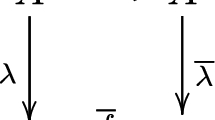Abstract
This paper investigates the number of trace-one elements in a polynomial basis for \(\mathbb{F}_{2^n}\). A polynomial basis with a small number of trace-one elements is desirable because it results in an efficient and low cost implementation of the trace function. We focus on the case where the reduction polynomial is a trinomial or a pentanomial, in which case field multiplication can also be efficiently implemented.
Similar content being viewed by others
References
ANSI X9.62, Public Key Cryptography for the Financial Services Industry: The Elliptic Curve Digital Signature Algorithm (ECDSA), American National Standards Institute (1999).
ANSI X9.63, Public Key Cryptography for the Financial Services Industry: Key Agreement and Key Transport Using Elliptic Curve Cryptography, American National Standards Institute (2001).
I. Blake S. Gao R. Lambert (1994) ArticleTitleConstructive problems for irreducible polynomials over finite fields Inform. Theory Appl. 793 1–23
A. Bluher, A Swan-like Theorem, Finite Fields and their Applications, to appear.
FIPS 186-2, Digital Signature Standard (DSS), Federal Information Processing Standards Publication 186-2, National Institute of Standards and Technology (2000).
K. Fong D. Hankerson J. López A. Menezes (2004) ArticleTitleField inversion and point halving revisited IEEE Trans. Comp. 53 1047–4059 Occurrence Handle10.1109/TC.2004.43
G. Gong T. Berson D. Stinson (2000) ArticleTitleElliptic curve pseudorandom sequence generators Selected Areas in Cryptography–SAC ’ 99 IssueID1758 34–48
G. Gong A. Youssef (2002) ArticleTitleCryptographic properties of the Welch-Gong transformation sequence generators IEEE Trans. Inform. Theory 48 2837–2846 Occurrence Handle10.1109/TIT.2002.804043
D. Hankerson, A. Menezes and S. Vanstone, Guide to Elliptic Curve Cryptography, Springer (2003).
E. Knudsen (1999) ArticleTitleElliptic scalar multiplication using point halving Adv. Cryptology–ASIACRYPT ’ 99 IssueID1716 135–149
R. Lidl and H. Niederreiter, Finite Fields, Cambridge University Press (1984).
M. Rabin (1980) ArticleTitleProbabilistic algorithms in finite fields SIAM J. Comput. 9 273–280 Occurrence Handle10.1137/0209024
R. Schroeppel, Elliptic curve point halving wins big, 2nd Midwest Arithmetical Geometry in Cryptography Workshop, Urbana, Illinois (November 2000).
G. Seroussi, Table of low-weight binary irreducible polynomials, Hewlett-Packard Technical Report HPL-98-135 (1998).
Author information
Authors and Affiliations
Corresponding author
Additional information
Communicated by: P. Wild
Rights and permissions
About this article
Cite this article
Ahmadi, O., Menezes, A. On the Number of Trace-One Elements in Polynomial Bases for \(\mathbb{F}_{2^n}\). Des Codes Crypt 37, 493–507 (2005). https://doi.org/10.1007/s10623-004-4039-4
Received:
Revised:
Accepted:
Issue Date:
DOI: https://doi.org/10.1007/s10623-004-4039-4




